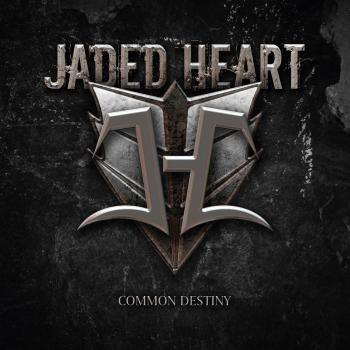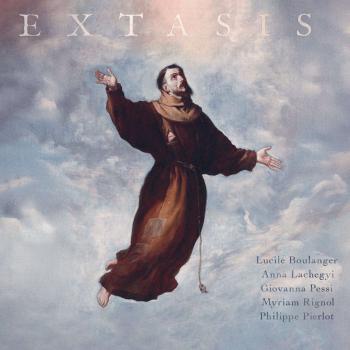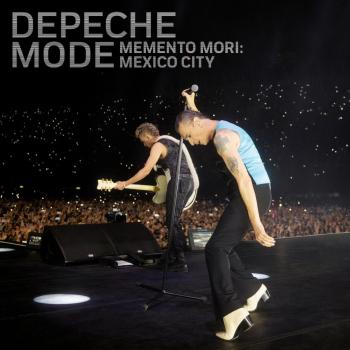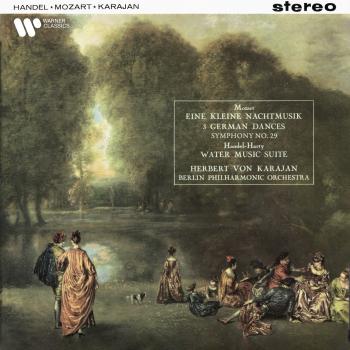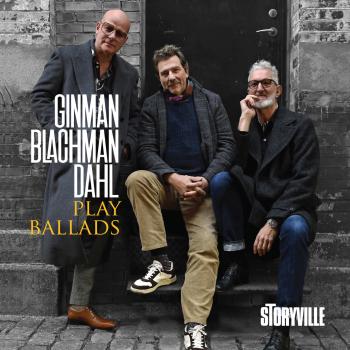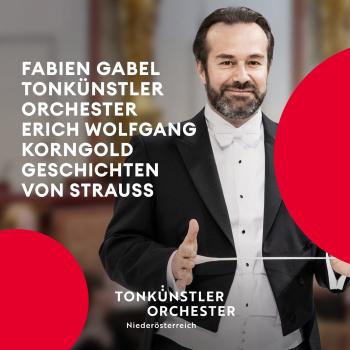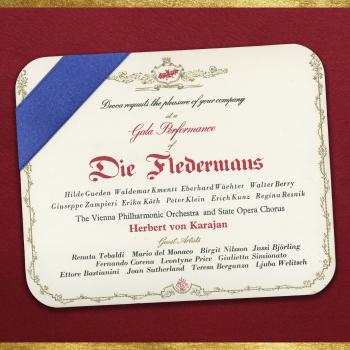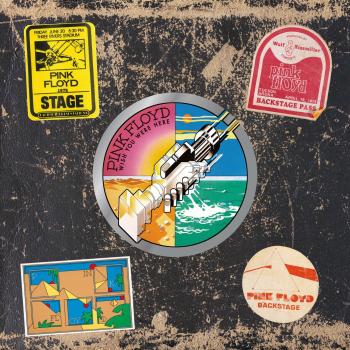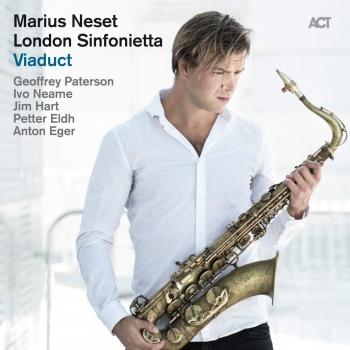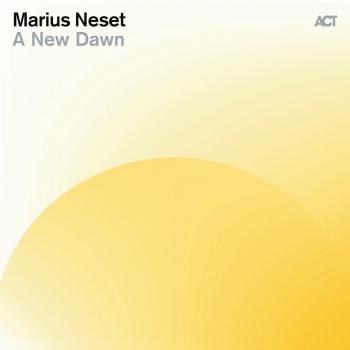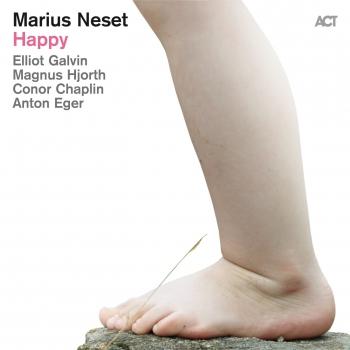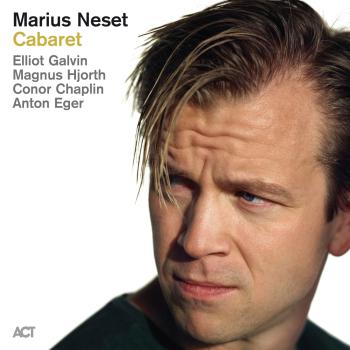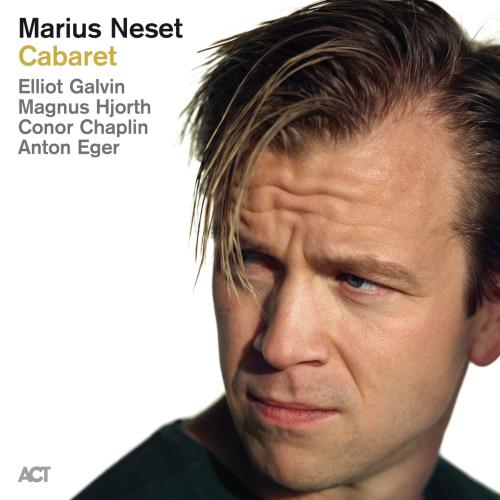
Cabaret Marius Neset
Album Info
Album Veröffentlichung:
2025
HRA-Veröffentlichung:
28.02.2025
Das Album enthält Albumcover Booklet (PDF)
- 1 Cabaret 05:36
- 2 Hyp3rsonic Cabar3t 05:42
- 3 Song for Maja 07:11
- 4 P11 03:35
- 5 Midsummer Beats 04:58
- 6 The Ocean 06:07
- 7 Quantum Dance 06:56
- 8 Forgotten Ballet 03:50
- 9 Lizarb 04:40
- 10 Wedding in Geiranger 06:49
Info zu Cabaret
Eine Band wie ein fünfköpfiges Orchester. Atemberaubend vielschichtige Musik, voller Virtuosität und unerschöpflicher Fantasie.
Cabaret: Musik, Tanz, schräge Späße, viel Glitzer und jede Menge Überraschungen. So weit, so bekannt. Das Album „Cabaret“ des norwegischen Saxofonisten und Komponisten Marius Neset nimmt die Zuhörer:innen mit in eine Welt atemberaubend breit gefächerter musikalischer Vorstellungskraft. Und auch wenn Neset nach vielbeachteten orchestralen Werken hier wieder zur kleinen Besetzung zurückkehrt, meint man stets, mehr als nur fünf Musikern zuzuhören. Wie schon auf dem Album „Happy“ von 2022 besteht Maris Nesets Quintett aus Elliot Galvin (Keyboards), Magnus Hjorth (Piano), Conor Chaplin (E-Bass) und Anton Eger (Drums & Percussion). Auf „Happy“ spielten die Musiker erstmals in dieser Konstellation zusammen. Inzwischen sind sie eine erfahrene Working Band: „Wir haben viele Konzerte gespielt und wie sich diese Band in dieser Zeit entwickelt hat, ist für mich schlicht einzigartig“, rekapituliert Marius Neset. Nach Veröffentlichungen mit der „London Sinfonietta“ (inklusive Auftritt in der Royal Albert Hall bei den “BBC Proms”), einer Solo-Saxophon-Platte und einer Duo-Suite mit dem klassischen Klavierstar Leif Ove Andsnes ist das Quintett für Marius Neset „wie Nachhausekommen“. Gleichzeitig ging es auf „Cabaret“ darum, die musikalischen Möglichkeiten dieser Besetzung noch tiefer auszuloten.
Die fünf Musiker trafen sich in der malerischen Abgelegenheit des norwegischen „Ocean Sound Studios“, in welchem Marius Neset 2015 bereits sein Album „Pinball“ aufnahm. Und wie damals brachte Marius Neset Musik mit zur Session, bei der „jede einzelne Note genau für diese besonderen Musiker komponiert wurde“. Auch in der kleinen Besetzung denkt der Komponist Marius Neset in orchestraler Bandbreite. Die Kombination von gleich zwei Musikern an Tasteninstrumenten, dem zumeist auf die Melodie fokussierten Magnus Hjorth am akustischen Piano und Elliot Galvin an elektrischen Keyboards eröffnet „enorme Möglichkeiten“. Die neuen Stücke erweitern auch die rhythmische Umgebung und steigern die Herausforderungen an Bassist Conor Chaplin und Schlagzeuger Anton Eger (Neset: „der hingebungsvollste Musiker, den ich je traf“), der so viel Energie in die Musik einspeist, dass man damit eine Kleinstadt erleuchten könnte. Besonders deutlich wird dies im Stück mit dem rätselhaften Titel ‘Hyp3rsonic Cabar3t’. Die Ziffern verweisen auf einen 33/8 Beat, welcher dem Stück eine hypnotische Wirkung verleiht.
Die Verbindung aus herausragenden Musikern und Nesets nie versiegendem Strom kompositorischer Ideen war die perfekte Basis für eine denkwürdige Zeit im Studio. „Cabaret ist das konzeptionellste Album, das ich je gemacht habe,“ sagt Neset. „Wenn man so etwas zusammenstellt, muss man ständig Entscheidungen treffen. Das ist wirklich fordernd“. Ein aufwändiger Prozess mit beeindruckendem Resultat. Nesets dichte, komplexe, dynamische Musik ist eine Achterbahnfahrt aus enorm kontrastreichen Songs. Viele Einflüsse klingen an, unter anderem Joe Zawinuls melodische und strukturelle Eigenarten und Spuren des koboldhaften Humors von Nesets früherem Mentor Django Bates. Aber unterm Strich bietet „Cabaret“ Neset pur, vom kompositorischen Detail bis zum virtuosen Saxophonspiel auf Tenor und Sopran bei dem melodisches Gespür auf ein Maß an technischem Können trifft, durch das es Neset mit jedem Spieler dieser Welt aufnehmen kann.
Es steckt so viel unterschiedliche Musik in „Cabaret“ - vom verrückten Tanz der beiden Eröffnungsstücke, über den coolen Lyrismus von „Song for Maja“, den Überschwang der „Midsummer Beats“, bis zur Weite von „The Ocean“, der Energie von „Quantum Dance“ und der Wehmut von „Forgotten Ballet“. Das folkloristische „Wedding In Geiranger”, geschrieben für Nesets eigene Verlobung im letzten Sommer, schließt den Reigen. „Cabaret“ ist eine ereignisreiche und dramatische Reise, an deren Ende der Hörer mit Sicherheit gleich wieder neu starten möchte.
Marius Neset, Tenor- und Sopransaxophon, EWI
Elliot Galvin, Tasteninstrumente
Magnus Hjorth, Klavier
Conor Chaplin, E-Bass
Anton Eger, Schlagzeug, Percussion
Marius Neset
was born in 1985, in Bergen, a sleepy Norwegian harbour town that’s home to the internationally renowned Nattjazz Festival (Neset won the Talent Award there in 2004). Besides his love of jazz in its widest sense, the saxophonist-composer also grew up listening to bands from the so-called ‘Bergen wave’ of post-rock such as Royksopp (and from there on to Radiohead) through to the great classical composer of his hometown Edvard Grieg as well as more contemporary art music. “I love being in the mountains, and silence is a music as well. Maybe it’s because I’m from Norway I feel this,” he says. It accounts for the huge diversity and fluidity of movement between different elements of so-called genres that’s been a key characteristic of Marius Neset’s music to date.
When only 5 years old, before taking up the sax, he took lessons on drums and this has had a significant impact on his approach to composition in particular. “I think the drums gave me a rhythmic base that was very important. I learnt very young to play in these odd meters so I think I have a very natural feel for it,” he says. Neset, in live performance, also has the uncanny ability of making one saxophone sound like two or three.
In 2003 Neset moved to Copenhagen to study at the Rhythmic Music Conservatory. The great English pianist and large ensemble arranger Django Bates was professor there at the time and became Neset’s mentor. The saxophonist went on to become the star turn in Bates’ student big band StoRMchaser recording a CD Spring is Here (Shall we Dance?) in 2008. Meanwhile Neset also released his debut Suite for the Seven Mountains that year on the Danish Calibrated label. Besides a string quartet, it featured the Swedish drummer Anton Eger, who alongside Neset was also a leading member of Scandi-fusion boy band JazzKamikaze. In 2010 Django Bates took him to London to play at a concert at Kings Place marking his 50th birthday. Neset also appeared as a guest in Django Bates’ long time ensemble Human Chain at the famous Ronnie Scott’s club. Recorded by BBC Jazz on 3 he wowed the audience with his contrast of lightening virtuosity and tender, ethereal lyricism. One of those blown away was Dave Stapleton head of the fast emerging UK independent jazz label Edition Records.
Edition signed Neset to the label in 2011. GoldenXplosion, featuring a quartet that included Django on keys and the Scandi-Brit trio Phronesis’ rhythm section of Jasper Hoiby and Eger, was released to glowing press reviews with The Guardian writer John Fordham accurately predicting Neset would be, “on his way to being one of the biggest new draws on the circuit”. By the time of his second CD on Edition Birds in 2012, Neset had started developing his penchant for larger ensemble music and a widescreen palette of instrumental sound.
Still only 29 years of age, Neset is successfully hitting the international stage, and being talked about as a big tenor in a lineage that extends from the post-bop Americans from Michael Brecker, Chris Potter through to fellow Norwegian Jan Garbarek. But there’s a lot more to one of Europe’s brightest young stars than that. “I’m very inspired by people like Frank Zappa, Django Bates, Pat Metheny and Wayne Shorter where the music and the playing is one,” he has said. Neset’s classy, cohesive composition and arranging skills have come into even sharper focus with a new album Lion released in 2014, his debut for the Munich-based ACT, one of Europe’s leading jazz labels, in a collaboration with the celebrated Trondheim Jazz Orchestra, whose former collaborations have boasted the likes of Chick Corea and Pat Metheny. It was originally a commission to compose for the 13-piece orchestra (in a lineup that includes tuba player Daniel Herskedal, a fellow student at RMC who together released an impressive duo album Neck of the Woods in 2012.) for a concert at the 2012 Molde Jazz Festival. “After the premiere in Molde, these compositions felt so special that we decided to record this album and play many more concerts with it,” he says.
Booklet für Cabaret

